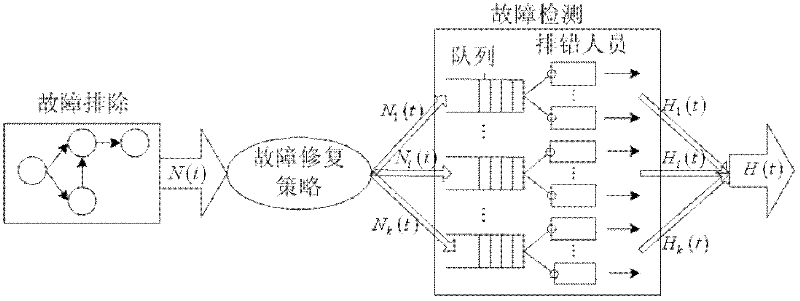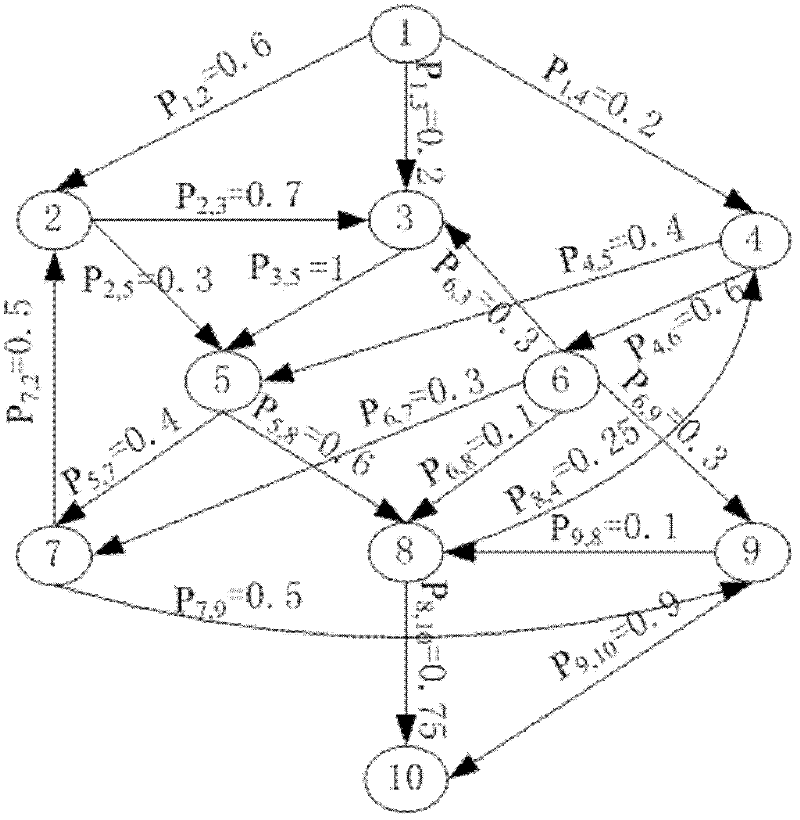Component software reliability analysis method capable of considering limitation of debugging resources based on HFSQM (Hybrid Finite Server Queuing Model)
A technology of queuing model and analysis method, applied in the field of software reliability analysis, can solve the problem of waiting in line for faults, and achieve the effect of reducing the total cost
- Summary
- Abstract
- Description
- Claims
- Application Information
AI Technical Summary
Problems solved by technology
Method used
Image
Examples
specific Embodiment approach 1
[0026] Specific implementation mode one: combine figure 1 with figure 2 This embodiment is described. The component software integration test in this embodiment refers to the process of assembling all the components in the application for testing, and all the components in the application work together. As tests are performed, faults are continuously discovered and eliminated, and the software application experiences an increase in reliability. The testing process includes a fault detection process and a fault elimination process. An integration testing troubleshooting strategy links these two stochastic processes.
[0027] During the integration testing process, the troubleshooting activities are organized according to the troubleshooting strategy. Troubleshooting strategy According to the actual development characteristics and budget and schedule requirements, the troubleshooting resources are reasonably allocated, and the detected faults are assigned to the correspondin...
specific Embodiment approach 2
[0091] Specific implementation mode two: combination Figure 3 to Figure 19 This embodiment is described. The first difference between this embodiment and the specific embodiment lies in the experimental analysis of the simulation method based on HFSQM. The architecture of the application is as image 3 shown.
[0092] Analysis of simulation process without considering the limitation of debugging resources
[0093] Use the failure rate of Goel-Okumoto software reliability growth model to describe the failure behavior of each component in the application. Then the failure rate of component i is where α i Denotes the expected value of the total number of faults that may eventually be detected from component i, b i Indicates the detection rate of each fault, t i Indicates the cumulative execution time of component i. Without loss of generality, assume that all components in the application satisfy a i =20.05,b i =0.0057, the execution time of the component is one time u...
PUM
 Login to View More
Login to View More Abstract
Description
Claims
Application Information
 Login to View More
Login to View More - R&D
- Intellectual Property
- Life Sciences
- Materials
- Tech Scout
- Unparalleled Data Quality
- Higher Quality Content
- 60% Fewer Hallucinations
Browse by: Latest US Patents, China's latest patents, Technical Efficacy Thesaurus, Application Domain, Technology Topic, Popular Technical Reports.
© 2025 PatSnap. All rights reserved.Legal|Privacy policy|Modern Slavery Act Transparency Statement|Sitemap|About US| Contact US: help@patsnap.com



